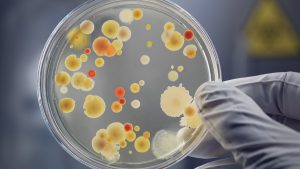CBD And the Endocannabinoid System
According to a 2019 study by researchers from the University of California and Johns Hopkins University, search rates for CBD (in the US) grew to 126% from 2016 to 2017, 160% the next year, and 118% the year after that (1). Closer home, Australia’s medical cannabis market is experiencing exponential growth.<? In 2017, only 457 patients on the entire continent had access to medical cannabis. By 2019, that number had increased by 34x to 15,556.
Data suggests that through 2019, active medical cannabis patients increased by an average monthly growth rate of 19%. By May 2020, the Therapeutic Goods Administration (TGA) had approved at least 18,000 medical cannabis applications (2).
It’s obvious the demand for cannabis extracts is on a steady rise. This merit understanding the mechanisms behind cannabinoids (chemical compounds found in cannabis) such as CBD and how they affect the human body. Understanding the Endocannabinoid System. Cannabinoids in the cannabis plant, including CBD interact with many systems in the human body and among them, most importantly, the endocannabinoid system (ECS).
The endocannabinoid system (ECS) is a complex cell-signalling system responsible for internal regulation, cellular communication and homeostasis. It is universally found in all mammals (3).
This system was discovered in the 1990s by scientists exploring THC, a popular phytocannabinoid.
While there’s a long way to go to understand the ECS fully, we know the significant role it plays in regulating vital body processes, including:
- Pain
- Sleep
- Immune system response
- Metabolism
- Memory
- Mood
- Appetite
- Motor control
- Reproduction health
- Skin and nerve health, etc
POINT TO NOTE: The endocannabinoid system exists and is active in all mammals even if they don’t use cannabis. However, research suggests that cannabinoids such as CBD may help maintain a healthy ECS.
Components of The Endocannabinoid System
To understand how CBD may impact the human body, we need to understand how the ECS works. The ECS involves three core components: receptors, enzymes, and endocannabinoids.
Endocannabinoids
Endocannabinoids are the molecules internally produced within human body and are similar in function and structure to THC. These molecules are the chemical messengers of the endocannabinoid system.
So far, we know two key endocannabinoids: anandamide and 2-arachidonoylglycerol.
Anandamide, also known as the bliss molecule, is available throughout your ECS and is thought to impact appetite, pregnancy, memory, among other health benefits. It has also been associated with the ‘runner’s high’ (4) you experience after an intense exercise. On the other hand, 2-ArachidonoylGlycerol is involved with your emotional state, cardiovascular health, seizures, and even orgasm (5). Interesting, right?
Cannabinoid Receptors (CB Receptors)
; Cannabinoid receptors are found throughout the human body. These receptors are activated by endocannabinoids as well as some phytocannabinoids, for example THC.
When these molecules bind to cannabinoid receptors, the endocannabinoid system is triggered to take a specific action. We know two main CB receptors:
• CB1 receptors
– Abundant in the central nervous system. Depending on their location in the brain, CB1 receptors can moderate mood, memory, pain perception, as well as motor function. Activation of these receptors in the brain by THC might trigger intoxicating effects on cannabis users.
• CB2 receptors
– Mostly found in the immune system and associated structures. Scientists now believe that CB2 receptors are involved in the pharmacological effects of cannabinoids on immune function and inflammation.
Enzymes
Once the endocannabinoids have carried out their functions, they’re broken down by enzymes.
This helps prevent the endocannabinoids from continuing to stimulate the endocannabinoid system indefinitely.
The ECS contains enzymes involved in the synthesis and degradation of endocannabinoids.
The ones involved in degradation are
• Monoacylglycerol acid lipase
– Breaks down 2-AG, and
• Fatty acid amide hydrolase
– Breaks down AEA.
Function of The Endocannabinoid System in Maintaining Homeostasis
As mentioned, it will take a bit longer before we can explain exactly how the endocannabinoid system works or all its potential benefits. It is a very complex system and its main role is to maintain homeostasis. (6)
Homeostasis refers to a balance in the body’s internal environment. This means that when your body, for instance, produces too much of something, let’s say the stress hormone, or when external factors, e.g., anxiety or pain due to an injury, throws your body’s internal environment off balance, the ECS jumps into action to help return your body to its ideal operation.
How CBD Interacts with the ECS- (Effects Of CBD)
Now that we know what’s the ECS and its role in the human body, why do we need CBD? In other words, how does CBD interact with the endocannabinoid system?
As you probably already know, unlike THC, CBD doesn’t cause any mind-altering effects on users. This has to do with how the two cannabinoids impact the ECS.
Trying to explain this, research has shown that just like the endocannabinoid anandamide, THC can bind to CB1 receptors in the brain.
However, the difference here is that while endocannabinoid anandamide has a relaxing effect on the brain, THC might be intoxicating and lead to mind-altering effects.
FAAH is the enzyme responsible for anandamide degradation but at the same time it’s not very strong against THC. This is why THC users tend to remain high for longer.
On the other hand, CBD doesn’t bind directly to the CB receptors. Instead, it’s thought to impact the ECS by reducing the action of the enzyme linked to degrading anandamide.
This means a higher concentration of anandamide in the body. Since this endocannabinoid has a calming effect on the brain, by acting as a FAAH inhibitor, CBD may help control mood imbalance symptoms such as anxiety and stress.
In other words, instead of having a direct impact on the ECS, CBD helps potentiate the effects of anandamide (7).
It is also important to mention that CBD interacts with many other metabolic systems in the human body.
While more research is needed to ascertain the full potential of CBD in our bodies, doctors are already prescribing it to help manage some chronic conditions such as pain, nausea, stress, and anxiety.
Effects of CBD On the Endocannabinoid System- Wrapping Up
The ECS helps maintain a balance in the body’s internal environment (homeostasis).
Unfortunately, this balance may be disrupted, leading to what Dr Ethan Russo M.D., Director of Research and Development of the International Cannabis and Cannabinoids Institute, terms as clinical endocannabinoid deficiency.
In his theory, Dr Russo links clinical endocannabinoid deficiency to some chronic health conditions such as irritable bowel syndrome, migraine, fibromyalgia, and other treatment-resistant syndromes (8).
The fact that the endocannabinoid system is present in every major body system explains how an imbalance in the system can lead to many (and varied) health conditions.
More research is obviously needed to ascertain this, but given how CBD interacts with the body, it may help promote a balanced and healthy ECS.
References
1.Trends in Internet Searches for Cannabidiol (CBD) in the United States Jama Network Open https://jamanetwork.com/journals/jamanetworkopen/fullarticle/2753393
2. Australia’s Medical Cannabis Market: Lots Of Potential, Yet, Few Patients New Frontier Data https://newfrontierdata.com/cannabis-insights/the-ins-and-outs-of-australias-medical-cannabismarket/
3. Introduction To The Endocannabinoid System Norml.org https://norml.org/marijuana/library/recent-medical-marijuana-research/introduction-to-the-endocannabinoid-system/
4. New Brain Effect Behind The Runner’s High Scientific American https://www.scientificamerican.com/article/new-brain-effects-behind-runner-s-high/
5. Masturbation To Orgasm Stimulates The Release Of The Endocannabinoid 2-Arachidonoylglycerol In Humans The Journal Of Sexual Medicine https://www.jsm.jsexmed.org/article/S1743-6095(17)31443-1/abstract
6. The Role Of The Endocannabinoid System In The Human Body Cure Pharmaceutical https://www.curepharmaceutical.com/blog/the-role-of-the-endocannabinoid-system-in-the-human-body/#:~:text=The%20endocannabinoid%20system%20is%20a,metabolism%2C%20memory%2C%20and%20more
7. Cannabidiol Enhances Anandamide Signalling And Alleviates Psychotic Symptoms Of Schizophrenia Translational Psychiatry https://www.nature.com/articles/tp201215#Sec9
8. Clinical Endocannabinoid Deficiency Reconsidered: Current Research Supports the Theory in Migraine, Fibromyalgia, Irritable Bowel, and Other Treatment-Resistant Syndromes National Centre For Biotechnology Information https://www.ncbi.nlm.nih.gov/pmc/articles/PMC5576607/


